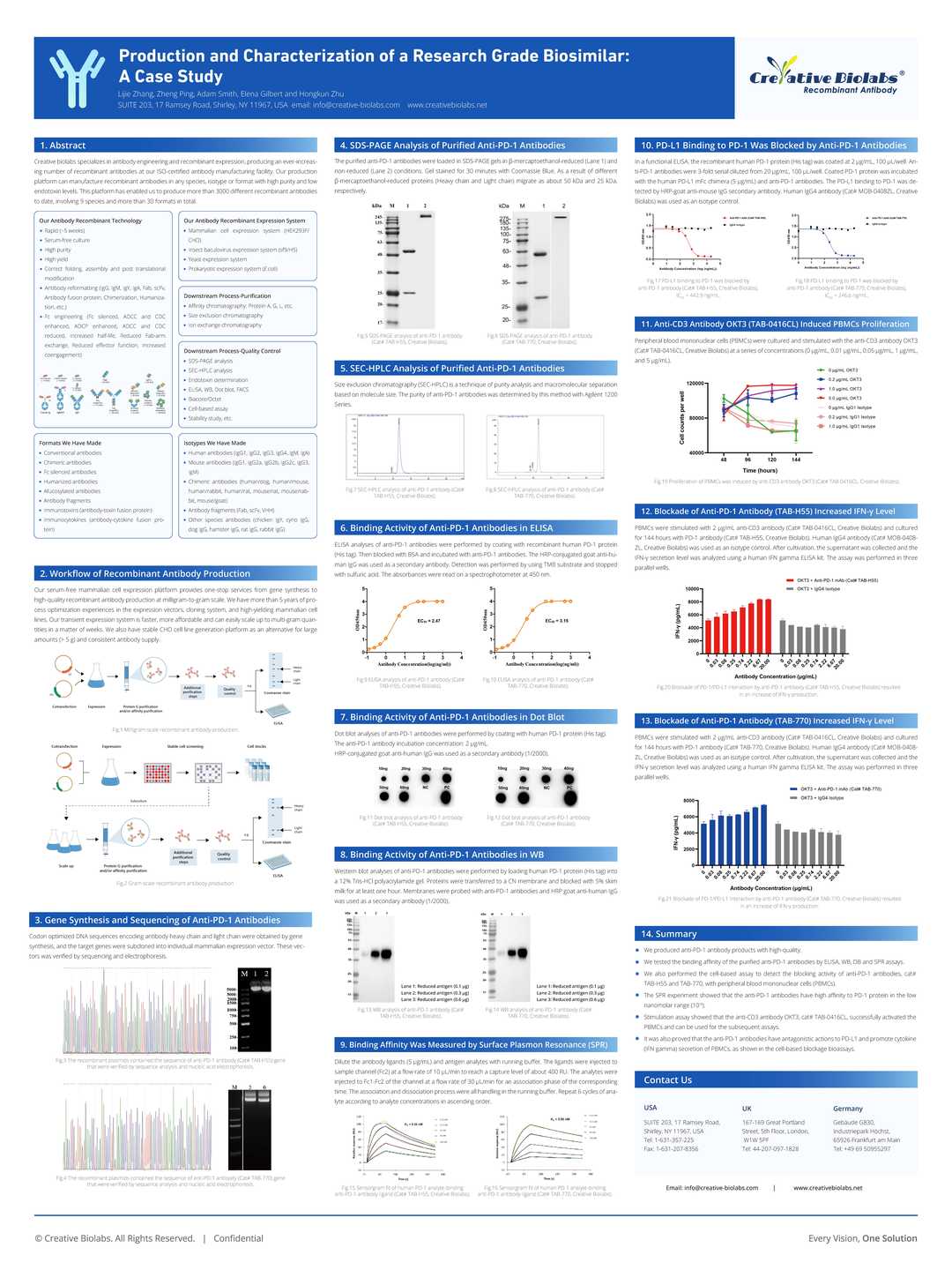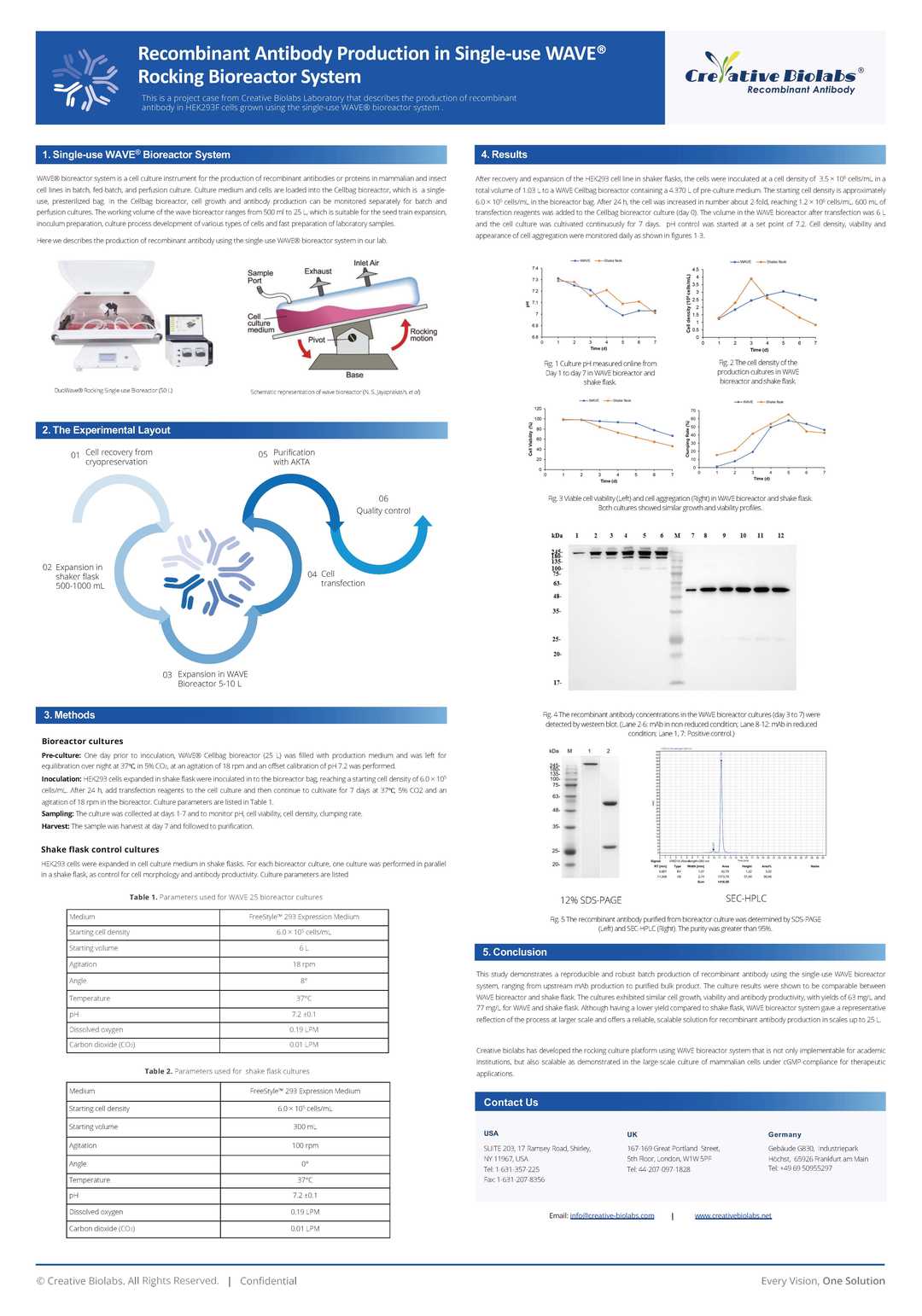Recombinant Human Anti-Hepatitis C virus Antibody (AP33)
CAT#: PABX-079
Anti-Hepatitis C virus antibody is a Human antibody of IgG class that binds to an Hepatitis C virus.



Specifications
- Immunogen
- The details of the immunogen for this antibody are not available.
- Host Species
- Human
- Derivation
- Human
- Type
- IgG
- Specificity
- Tested positive against native Hepatitis C virus Hepatitis C virus
- Species Reactivity
- Hepatitis C virus
- Clone
- AP33
- Applications
- WB 1:1000-1:5000
ELISA 1:10000-1:20000
FuncS (assay dependent)
Product Property
- Purity
- >95% by SDS-PAGE and HPLC analysis
- Storage
- Store the antibody (in aliquots) at -20°C. Avoid repeated freezing and thawing of samples.
Applications
- Application Notes
- Assay-depended
Target
- Alternative Names
- Hepatitis C virus; HCV; HVC; Flaviviridae
Customer Review
There are currently no Customer reviews or questions for PABX-079. Click the button above to contact us or submit your feedback about this product.
 Laura Hill
Laura Hill John Martinez
John Martinez Sarah Evans
Sarah EvansQ&As
-
Is the anti-Hepatitis C virus antibody AP33 suitable for use in Western blotting?
A: Yes, the anti-Hepatitis C virus antibody AP33 (PABX-079) is suitable for use in Western blotting. It provides specific binding to the HCV E2 protein, allowing for reliable detection in Western blot assays.
-
What are the storage recommendations for the anti-Hepatitis C virus antibody AP33?
A: The recommended storage condition for the anti-Hepatitis C virus antibody AP33 (PABX-079) is at -20°C or lower. For short-term storage, it can be kept at 2-8°C. To ensure stability, avoid repeated freeze-thaw cycles.
-
Can the anti-Hepatitis C virus antibody AP33 be used in immunoprecipitation assays?
A: Yes, the anti-Hepatitis C virus antibody AP33 (PABX-079) can be used in immunoprecipitation assays. It provides specific binding to the HCV E2 protein, enabling the successful precipitation of the target protein from complex mixtures.
-
Is the anti-Hepatitis C virus antibody AP33 effective in ELISA applications?
A: Yes, the anti-Hepatitis C virus antibody AP33 (PABX-079) is effective in ELISA applications. It has been validated for use in such assays and provides reliable detection of the HCV E2 protein.
-
What is the optimal dilution for using the anti-Hepatitis C virus antibody AP33 in immunofluorescence?
A: The optimal dilution for using the anti-Hepatitis C virus antibody AP33 (PABX-079) in immunofluorescence is typically 1:100 to 1:500. It is advisable to perform a dilution series to determine the best working concentration for your specific experimental conditions.
View the frequently asked questions answered by Creative Biolabs Support.
Citations
-
Deng, Kai, et al. "Hepatitis C virus hypervariable region 1 antibodies interrupt E2-SR-B1 interaction to suppress viral infection." Iscience 26.4 (2023). https://doi.org/10.1016/j.isci.2023.106421This study investigates the role of antibodies targeting the hypervariable region 1 (HVR1) of the hepatitis C virus (HCV) envelope protein in blocking viral infection. The researchers demonstrated that antibodies specific to the HVR1 region could inhibit the interaction between the HCV E2 protein and the SR-B1 receptor, which is crucial for viral entry into host cells. Through experiments with antibodies derived from chronic hepatitis C (CHC) patients and rabbits immunized with HVR1 peptides, the study showed that these antibodies could effectively neutralize multiple HCV genotypes, thereby highlighting the potential of HVR1-targeting antibodies in controlling HCV infections.
Creative Biolabs provided the monoclonal antibody AP33 (Cat# PABX-079) used to block cell-free transmission of HCV in the cell-cell transmission assays. The AP33 antibody was crucial in demonstrating the efficacy of patient-derived IgGs and HVR1-specific antibodies in inhibiting both cell-free and cell-cell transmission of the virus. This contribution was essential for validating the study's findings on the role of HVR1-targeting antibodies in preventing HCV infection and transmission.
Cite This Product
To accurately reference this product in your publication, please use the following citation information:
(Creative Biolabs Cat# PABX-079, RRID: AB_3111698)
Submit Your Publication
Published with our product? Submit your paper and receive a 10% discount on your next order! Share your research to earn exclusive rewards.
Downloadable Resources
Download resources about recombinant antibody development and antibody engineering to boost your research.
Product Notes
This is a product of Creative Biolabs' Hi-Affi™ recombinant antibody portfolio, which has several benefits including:
• Increased sensitivity
• Confirmed specificity
• High repeatability
• Excellent batch-to-batch consistency
• Sustainable supply
• Animal-free production
See more details about Hi-Affi™ recombinant antibody benefits.
Datasheet
MSDS
COA
Certificate of Analysis LookupTo download a Certificate of Analysis, please enter a lot number in the search box below. Note: Certificate of Analysis not available for kit components.
See other products for "Clone AP33"
- CAT
- Product Name
See other products for "HCV"
Select a product category from the dropdown menu below to view related products.
| CAT | Product Name | Application | Type |
|---|---|---|---|
| NABG-079 | Recombinant Anti-HCV VHH Single Domain Antibody | ELISA, IHC, FC, FuncS | Llama VHH |
| CAT | Product Name | Application | Type |
|---|---|---|---|
| MHH-444-S(P) | Recombinant Human Anti-HCV Antibody scFv Fragment | IF, FC, Biosensors, FuncS | scFv |
| HPAB-0802-FY-F(E) | Recombinant Anti-HCV Antibody scFv Fragment (AOT3) | E | |
| HPAB-0803-FY-F(E) | Recombinant Anti-HCV Antibody scFv Fragment (C11-3) | E | |
| HPAB-1178-FY-F(E) | Human Anti-HCV Recombinant Antibody Fab Fragment (HPAB-1178-FY-F(E)) | ELISA | Human Fab |
| HPAB-1179-FY-F(E) | Human Anti-HCV Recombinant Antibody Fab Fragment (HPAB-1179-FY-F(E)) | ELISA | Human Fab |
| CAT | Product Name | Application | Type |
|---|---|---|---|
| TAB-344CL | Human Anti-HCV Recombinant Antibody (TAB-344CL) | FuncS | Human IgG |
| PABX-071 | Recombinant Human Anti-HCV Antibody (HC33.4) | WB, ELISA, Neut, FuncS | IgG |
| PABX-071-F (E) | Recombinant Human Anti-HCV Antibody Fab Fragment (HC33.4) | WB, ELISA, Neut, FuncS | Fab |
| PABX-079-F (E) | Recombinant Human Anti-Hepatitis C virus Antibody Fab Fragment (AP33) | WB, ELISA, FuncS | Fab |
| CAT | Product Name | Application | Type |
|---|---|---|---|
| PABX-071-S (P) | Recombinant Human Anti-HCV Antibody scFv Fragment (HC33.4) | WB, ELISA, Neut, FuncS | scFv |
| PABX-079-S (P) | Recombinant Human Anti-Hepatitis C virus Antibody scFv Fragment (AP33) | WB, ELISA, FuncS | scFv |
| CAT | Product Name | Application | Type |
|---|---|---|---|
| HPAB-0232-FY | Recombinant Human Anti-HCV Antibody (HPAB-0232-FY) | WB, F, N | Human IgG |
| HPAB-0233-FY | Recombinant Human Anti-HCV Antibody (HPAB-0233-FY) | WB, E, N | Human IgG |
| HPAB-0802-FY | Recombinant Anti-HCV Antibody (AOT3) | E | |
| HPAB-0803-FY | Recombinant Anti-HCV Antibody (C11-3) | E | |
| FAMAB-0585WJ | Human Anti-HCV Recombinant Antibody (clone 42C) | ELISA, WB, Neut | Human IgG |
| CAT | Product Name | Application | Type |
|---|---|---|---|
| HPAB-1178-FY-S(P) | Human Anti-HCV Recombinant Antibody scFv Fragment (HPAB-1178-FY-S(P)) | ELISA | Human scFv |
| HPAB-1179-FY-S(P) | Human Anti-HCV Recombinant Antibody scFv Fragment (HPAB-1179-FY-S(P)) | ELISA | Human scFv |
| HPAB-1180-FY-S(P) | Human Anti-HCV Recombinant Antibody scFv Fragment (HPAB-1180-FY-S(P)) | ELISA | Human scFv |
| HPAB-1181-FY-S(P) | Recombinant Anti-HCV Antibody Fab Fragment (B-3) | ELISA | Mouse Fab |
| FAMAB-0024WJ-F(E) | Human Anti-HCV Recombinant Antibody (clone B12.F8); Fab Fragment | ELISA, IF, IHC | Human Fab |
Popular Products

Application: ELISA, Neut, IF, IP, FC, FuncS

Application: ELISA, IP, FC, FuncS, Neut, IF, WB
-2.png)
Application: FuncS, IF, Neut, ELISA, FC, IP, ICC

Application: Neut, ELISA, IF, IP, FuncS, FC, ICC

Application: ELISA, FC, IP, FuncS, IF, Neut, ICC

Application: ELISA, Inhib, FC
-2.png)
Application: WB, ELISA

Application: ELISA, IHC, FC, IP, IF, FuncS
-4.jpg)
Application: FC, FuncS, IA, IF, IP, IHC

Application: ELISA, FC, WB, Inhib, IHC
For research use only. Not intended for any clinical use. No products from Creative Biolabs may be resold, modified for resale or used to manufacture commercial products without prior written approval from Creative Biolabs.
This site is protected by reCAPTCHA and the Google Privacy Policy and Terms of Service apply.




















